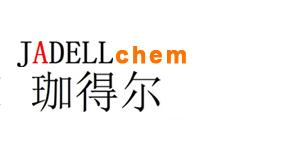Recombinant Human Oncostatin-M, 209a.a.是由209个氨基酸组成的多肽链。Oncostatin M是属于IL-6家族的细胞因子,其在造血,间充质干细胞分化,肝再生,心脏重塑,痛觉,炎症和代谢中具有多种功能。
Synonyms
rHuOSM; OSM
Species
HumanSource
E. coli Accession
P13725 Gene ID
5008 Molecular Weight
Approximately 23.8 kDa AA Sequence
MAAIGSCSKE YRVLLGQLQK QTDLMQDTSR LLDPYIRIQG LDVPKLREHC RERPGAFPSE ETLRGLGRRG FLQTLNATLG CVLHRLADLE QRLPKAQDLE RSGLNIEDLE KLQMARPNIL GLRNNIYCMA QLLDNSDTAE PTKAGRGASQ PPTPTPASDA FQRKLEGCRF LHGYHRFMHS VGRVFSKWGE SPNRSRRHSP HQALRKGVRR Biological Activity
The ED50 is <10 ng/mL as measured by TF-1 cells, corresponding to a specific activity of >1.0 × 105 units/mg. Appearance
Lyophilized powder. Formulation
Lyophilized after extensive dialysis against PBS. Endotoxin Level
<0.2 EU/μg, determined by LAL method. Reconstitution
Reconstitute the lyophilized recombinant Human Oncostatin-M, 209a.a. (rHuOSM, 209a.a.) to 100 μg/mL using ddH2O or PBS. Storage & Stability
Lyophilized recombinant Human Oncostatin-M, 209a.a. (rHuOSM, 209a.a.) is stored at -20°C. After reconstitution, it is stable at 4°C for 2 weeks or -20°C for longer. It is recommended to freeze aliquots at -20°C or -80°C for extended storage. Shipping
Room temperature in continental US; may vary elsewhere. Background
Oncostatin M is a cytokine belonging to the IL-6 family that has multiple functions in hematopoiesis, mesenchymal stem cell differentiation, liver regeneration, heart remodeling, nociception, inflammation and metabolism. The full-length Oncostatin M proteins contain between 239 and 263 amino acids which fold into a long-chain four helix-bundle protein with an up-up-down-down topology representative of all other IL-6 family cytokines. Human Oncostatin-M can bind to either the type I receptor complex consisting of gp130 and the LIFR (gp130/LIFRb) or the type II receptor complex consisting of gp130 and the OSMR (gp130/OSMRb). In the murine system Oncostatin-M has been shown to bind with high affinity only to the type II gp130/OSMRb complex[1][2]. Oncostatin-M binds to specific receptor complexes, then activates two major signaling pathways: Janus Kinase-Signal Transducers and Activators of Transcription (JAK-STAT) and Mitogen-Activated Protein Kinase (MAPK), to regulate downstream events[3]. |



